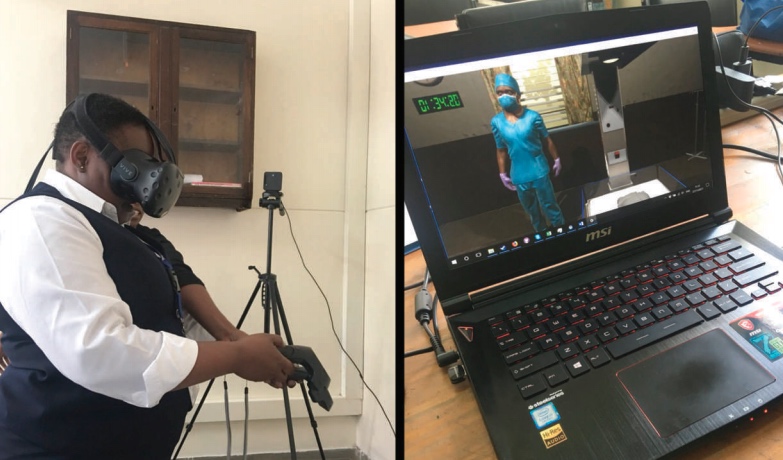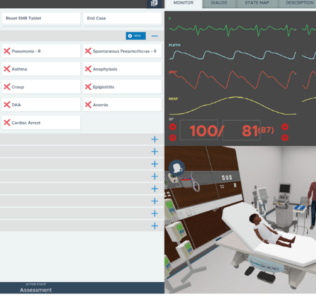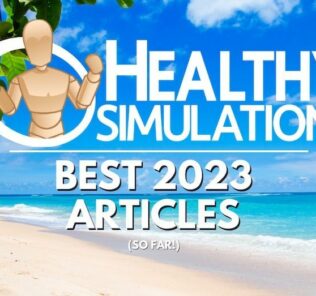Virtual Reality for Healthcare Training in Low- and Middle-Income Countries
The Pathways for Prosperity Commission Background Paper Series has put together research supporting medical simulation Virtual Reality (VR) for medical and nursing training in low- and middle-income countries. Naomi Muinga BSc MSc, KEMRI of the Wellcome Trust Research Programme in Nairobi, Kenya and Chris Paton BMBS BMedSci MBA FACHI FFCI of the Nuffield Department of Medicine in the University of Oxford, UK wrote the paper as part of a series of background papers on technological change and inclusive development, bringing together evidence, ideas and research to feed into the commission’s thinking.
This paper reviews the potential for the use of new low-cost Virtual Reality (VR) technology for conducting medical simulation training in low- and middle-income countries (LMICs). VR has been used in medical simulation training for many years but has traditionally been very expensive and required large machines that would be difficult to set up and maintain in LMICs.
However, new advances in computer technology have enabled a new generation of consumer-focused VR hardware that offers the potential for implementation in LMICs. Their research team based in Oxford and Kenya developed a VR training scenario for the Life-saving Instruction for Emergencies (LIFE) project. They tested LIFE:VR with healthcare workers in Kenya to establish the potential feasibility and acceptability of low-cost VR for medical simulation training.
Sponsored Content:
They found that healthcare workers were enthusiastic about the approach but the systems they tested had a number of technical limitations such as requiring powerful laptop computers and the installation of laser tracking base-stations that would limit scale up. However, newly announced hardware from major VR manufacturers appear to address these technical issues and will continue to reduce the costs of devices increasing the potential for wider adoption in LMICs.
The author’s experience in developing and testing LIFE:VR has demonstrated that VR is a feasible and attractive option for clinical education in LMICs. Their beta testers showed a high level of engagement with the technology and were keen to see more content made available. However, there were significant challenges that need to be overcome before VR could be used on a wider scale.
Even though the next-generation headsets are more affordable than first-generation VR systems, the early versions of next-generation VR devices they used require connections to powerful computers and wall-mounted laser tracking systems. However, the latest iterations of these devices, such as HTC VIVE Focus and the Oculus Go, are fully integrated stand-alone headsets that do not require any additional computers or training.
There is the potential for learning institutions to transition from the traditional VR technology to adopt stand-alone VR headsets. These headsets are preprogrammed with training modules; learners simply wear the headset and use the hand controller as a pointer to interact with the training scenarios. As VR technology continues to become more affordable and portable, its potential for adoption in LMICs for clinical education may be significant.
Sponsored Content:
This research team is now investigating how standalone VR headsets could be adopted by training institutions. They are continuing to work on new and expanded training scenarios for the LIFE platform that will be able to use these technologies to deliver high-quality simulation training at scale in LMICs.
About the Pathways Commission
The Pathways for Prosperity Commission on Technology and Inclusive Development – launched in January 2018 – is proud to work with a diverse group of commissioners who are global leaders from government, the private sector and academia. Hosted and managed by Oxford University’s Blavatnik School of Government, the Commission collaborates with international development partners, developing country governments, private sector leaders, emerging entrepreneurs and civil society.
It aims to catalyze new conversations and to encourage the co-design of country-level solutions aimed at making frontier technologies work for the benefit of the world’s poorest and most marginalized men and women.
Learn More & Download the Pathways Commission Report Here!
Lance Baily, BA, EMT-B, is the Founder / CEO of HealthySimulation.com, which he started in 2010 while serving as the Director of the Nevada System of Higher Education’s Clinical Simulation Center of Las Vegas. Lance also founded SimGHOSTS.org, the world’s only non-profit organization dedicated to supporting professionals operating healthcare simulation technologies. His co-edited Book: “Comprehensive Healthcare Simulation: Operations, Technology, and Innovative Practice” is cited as a key source for professional certification in the industry. Lance’s background also includes serving as a Simulation Technology Specialist for the LA Community College District, EMS fire fighting, Hollywood movie production, rescue diving, and global travel. He and his wife live with their two brilliant daughters and one crazy dachshund in Las Vegas, Nevada.
Sponsored Content:


















